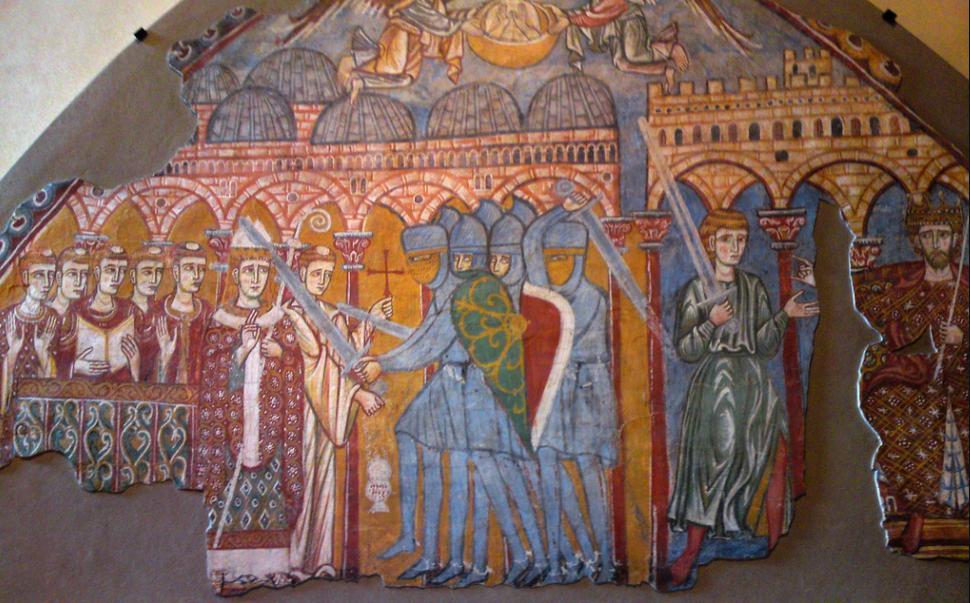
Find the perfect fit with Amazon Prime. Try Before You Buy.
The Martyrdom of Thomas Becket
Fresco in the Museo Diocesano
from Palazzo dei Trecento, Treviso, Veneto, Italy.
c.1180/90 or c.1260AD

A larger detail of the knights in the fresco in the Museo Diocesano from Palazzo dei Trecento.
Photo by cskriletz
